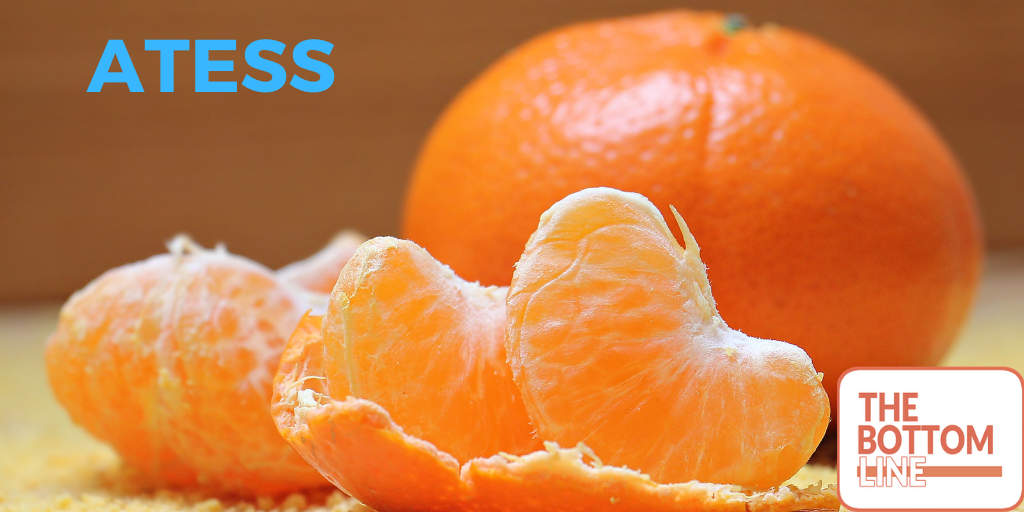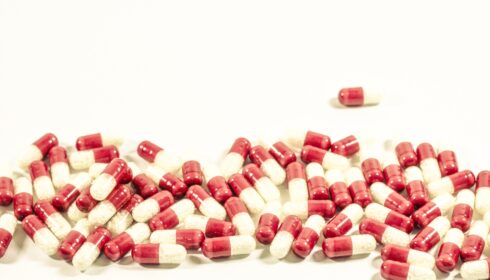ATESS

Combination therapy of vitamin C
and thiamine for septic shock: a multi-centre,
double-blinded randomized, controlled study
Hwang SY etl. ICM 2020 doi.org/10.1007/s00134-020-06191-3
Clinical Question
- In patients with septic shock, does the use of intravenous vitamin C and thiamine compared to standard therapy improve recovery from organ failure?
Background
- The use of vitamin C in the treatment of sepsis and septic shock remains controversial and divides opinion within critical care
- The initial before and after trial by Marik concluded that the early use of intravenous vitamin C, together with corticosteroids and thiamine may prove to be effective in preventing progressive organ dysfunction including acute kidney injury and reducing the mortality of patients with severe sepsis and septic shock
- Subsequently, the CITRIS-ALI trial did not show an improvement in organ recovery with the use of vitamin C in patients with sepsis although there was a reduction in mortality as a secondary outcome
- The VITAMINS trial concluded that the combination of vitamin C, thiamine and steroids did not improve mortality or recovery from septic shock
Design
- Multicentre, double-blind, randomised-control trial
- 1:1 randomisation by independent biostatistician
- Permuted block size of 4, stratification by site
- Intervention and control identically packaged
- Intention-to-treat analysis
- Power calculation
- Based on ΔSOFA score from Marik study
- Assuming an effect size in ΔSOFA of 1.5 in 72 hours, 116 patients were needed to have a 80% power, statistical significance of 5% and a dropout rate of 10%
- Protocol approved by individual Institutional Review Boards and the Ministry of Food and Drug Safety in Korea
- Wilcoxon Rank-Sum test used to compare ΔSOFA scores
Setting
- 4 academic Emergency Departments in South Korea
- Patients recruited between December 2018 to January 2020
Population
- Inclusion: Adult patients who presented to ED and diagnosed with septic shocked (during their ED stay) defined as;
- Sepsis (including suspected infection)
- Persisting hypotension requiring vasopressors to maintain a mean arterial pressure (MAP)≥65 mmHg
- Serum lactate level>2 mmol/L despite adequate fluid challenge
- Exclusion:
- Transferred from another hospital with vasopressor administration or
mechanical ventilator support - Limitations on treatment
- Underlying terminal-stage disease
- Taking at least 1 g/day of vitamin C or receiving intravenous thiamine prior to enrollment
- Cardiac arrest prior to enrollment
- Renal or ureteral stones
- Reached inclusion criteria >24 hours after ED criteria
- Patient refusal (by themselves or by proxy)
- Pregnancy
- G6PD deficiency/thalassaemia
- Hyperoxaluria/cystinuria
- Gout
- Known hypersensitivity to any trial drugs
- Transferred from another hospital with vasopressor administration or
- 554 screened, 116 randomised or which 111 included for final analysis
- Comparing baseline characteristics of intervention vs. control group
- Male: 37.7% vs. 37.9%
- Age: mean 70 vs. 69
- Hypertension: 35.9% vs. 41.4%
- Diabetes: 30.2% vs. 36.2%
- Cardiac disease: 9.4% vs. 10.3%
- Chronic lung disease: 7.6% vs. 5.2%
- Suspected focus of infection:
- Respiratory: 20.8% vs. 27.6%
- Intra-abdominal: 50.9% vs. 41.4%
- Urinary tract: 18.9% vs. 17.2%
- Blood culture-positive: 56.6% vs. 58.6%
- SOFA score at enrollment: median 8 vs. 8
- APACHE2 score: median 22 vs. 22
- Time from ED arrival to 1st study drug administration: median 8.4hrs vs. 9.9hrs
- Time from meeting eligibility criteria to the first study drug administration: median 3.1hrs vs. 3.8hrs
- Time from randomisation to 1st drug: median 0.8hrs vs. 1.2hrs
Intervention
- Vitamin C & thiamine
- Combined intravenous Vitamin C and thiamine mixed in 50mls 0.9% saline administered over 60 mins every 12 hrs for a total of 48 hours
- Vitamin C dose: 50mg/kg (max single dose 3gm, daily dose 6gm)
- Thiamine dose: 200mg
Control
- Placebo
- Identical volume of 0.9% saline at the same administration rate and frequency
Management common to both groups
- Initial resuscitation and management as per latest Surviving Sepsis Campaign guidelines
- At least 30mls/kg of intravenous crystalloid fluids administerd for pts with sepsis-induced hypoperfusion
- Norepinephrine first-choice vasopressor to maintain MAP > 65mmHg
- Vasopressin (up to 0.03U/min) and hydrocortisone (200mg/day) added if norepinephrine dose > 0.2mcg/kg/min
Outcome
- Primary outcome: ΔSOFA (difference between scores at 72 hrs and initial SOFA at enrollment. If pt died within 72hrs, worst score before death used)
- No significant difference between intervention and control group (median ΔSOFA 3 in both groups)
- Significant changes were shown in plasma vitamin C and thiamine levels, and in proportions of deficient patients, in the intervention group compared to the control group
- Secondary outcome:
- No significant difference between intervention and control group
- Mortality (7-day, 28-day, 90-day, in-hospital, ICU)
- Shock reversal
- Vasopressor free days and dose (at 24, 48, and 72 h from enrollment and maximum dose during 72 h)
- Duration of mechanical ventilation and ventilator-free days
- New-onset or worsening acute kidney injury (AKI)
- New use of renal replacement therapy (RRT) and RRT-free
days - ICU length of stay (LOS), ICU-free days, hospital LOS
- Reduction of CRP for 72 hrs
- Reduction of procalcitonin for 72 hrs
- No significant difference between intervention and control group
- No significant difference between intervention and control group in:
- Adjunctive steroid administered: 58.5% vs. 50%
- Time to 1st antibiotic: median 2.1hrs vs. 2.5hrs
- Time to 1st vasopressor: median 2hrs vs. 2.6hrs
- Fluid administered before randomisation: median 2l vs. 2l
- No adverse events in intervention group; mild events in 2 patients in control group
Authors’ Conclusions
- In this multi-centre, double-blind RCT, vitamin C and thiamine administration compared with placebo for 48 h in the early phase of septic shock did not significantly improve organ function, despite improvements in vitamin C and thiamine levels
Strengths
- Double-blinded, randomised, placebo control trials
- Pt dying within 72 hrs had the worse SOFA score used for analysis (as oppose to being excluded or given a score of 0)
- Comprehensive baseline and co-intervention variables e.g. amount of fluid administered, collected and compared
- Vitamin C and thiamine levels measured
- Adverse events reported
Weaknesses
- Power calculation based on study whose results have not been reproduced
- It isn’t clear where these patients were managed after presentation (ED vs. ICU/HDU); the healthcare system and hence logistics in Korea may not be the same compared to other countries
- Majority of cases were enrolled from 2 centres; including one with a significantly higher mortality compared to the others
- The primary outcome is not patient-centred
- Effects of vitamin C and thiamine not assessed separately
- Around 40% of patients in both groups had solid malignancies- this may limit the external validity of this trial outside of these patients
The Bottom Line
- This paper does not change my current practice and I will continue NOT to administer intravenous Vitamin C and thiamine routinely in patients with septic shock
External Links
- [article] Combination therapy of vitamin C and thiamine for septic shock: a multi-centre, double-blinded randomized, controlled study
- [blog] The Vitamins trial. Hydrocortisone, Vit C and Thiamine (Marik protocol – or not?) in sepsis. St Emlyn’s
- [blog] VITAMINS Trials – Vitamin C + Hydrocortisone + Thiamine in Septic Shock. FOAMcast
- [blog] PulmCrit- Metabolic Resuscitation: Was the answer inside us all along?
Metadata
Summary author: Adrian Wong
Summary date: 15/08/2020
Peer-review editor: Segun Olusanya



